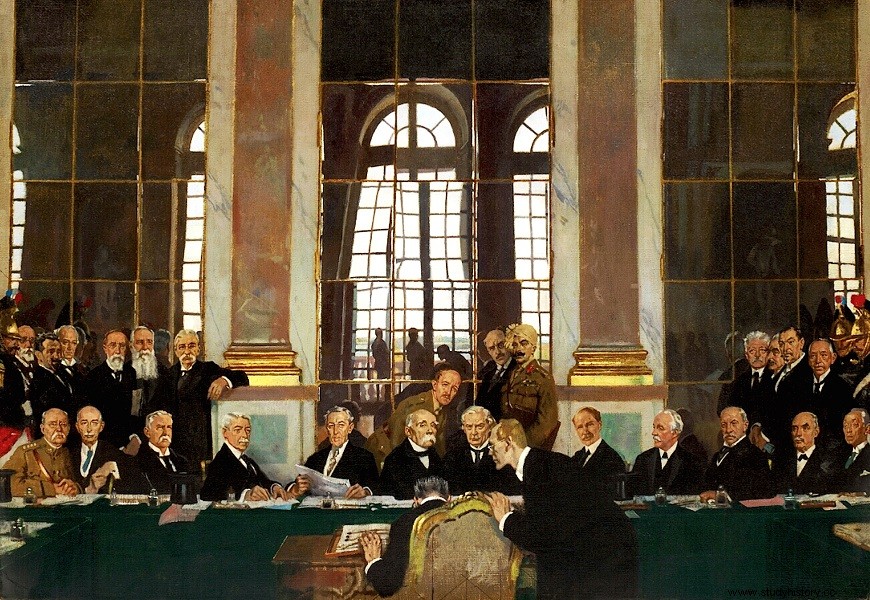
Historical context
With the end of World War I in 1918, the atmosphere of destruction gripped Europe. There were still strong tensions, although powers such as Russia, Germany and Austria-Hungary were defeated and other powers, such as England and France, were also ruined by the long war. The fact is that some attempts at a peace agreement were proposed from 1918 onwards. The one that, in fact, came into force became known as the Treaty from Versailles , which was signed on June 28, 1919.
Wilson's 14 point rejection
Before, however, in January 1918, other proposals were put forward. One of them was written by the President of the United States, Woodrow Wilson , and became known as Wilson's 14 points. However, the European powers were not satisfied with the American president's intentions. One of the main points of rejection of Wilson's proposal was the fact that it did not contain a strong rebuke to Germany, which was considered by nations such as France the main culprit for the immense catastrophe that was the First World War .
Signing of the treaty and heavy sanctions
So, in 1919, representatives of the winning countries met in the French city of Versailles to discuss what would be the measures to be taken so that there is no new threat of world conflict. The discussions between the authorities present had a complex content, as there was an orientation (especially after Woodrow Wilson's proposals) of not turning Germany into a "scapegoat" and subjecting it to heavy sanctions .
However, that's exactly what happened. On June 28, 1919, Germany was forced to sign the treaty that had been drawn up at Versailles. Among the sanctions that the winning countries imposed on it were:the loss of territories, such as the Alsace-Lorraine region, which was retaken by France; reduction of the army to a maximum of one hundred thousand men; impediment to possessing air force; ships carrying goods would be controlled by France and England; and, in addition to these sanctions, Germany would still have to pay the countries that drafted the treaty about 269 million marks (gold standard).
Consequences of the Treaty of Versailles
The decisions of the Treaty of Versailles, which were also applied to other countries, such as Italy, contributed to several waves of dissatisfaction and revolts in the following two decades:1920 and 1930. The Nazism German and Fascism Italian government formed the atmosphere of resentment that followed the First World War.
Image credits : Wikimedia Commons
